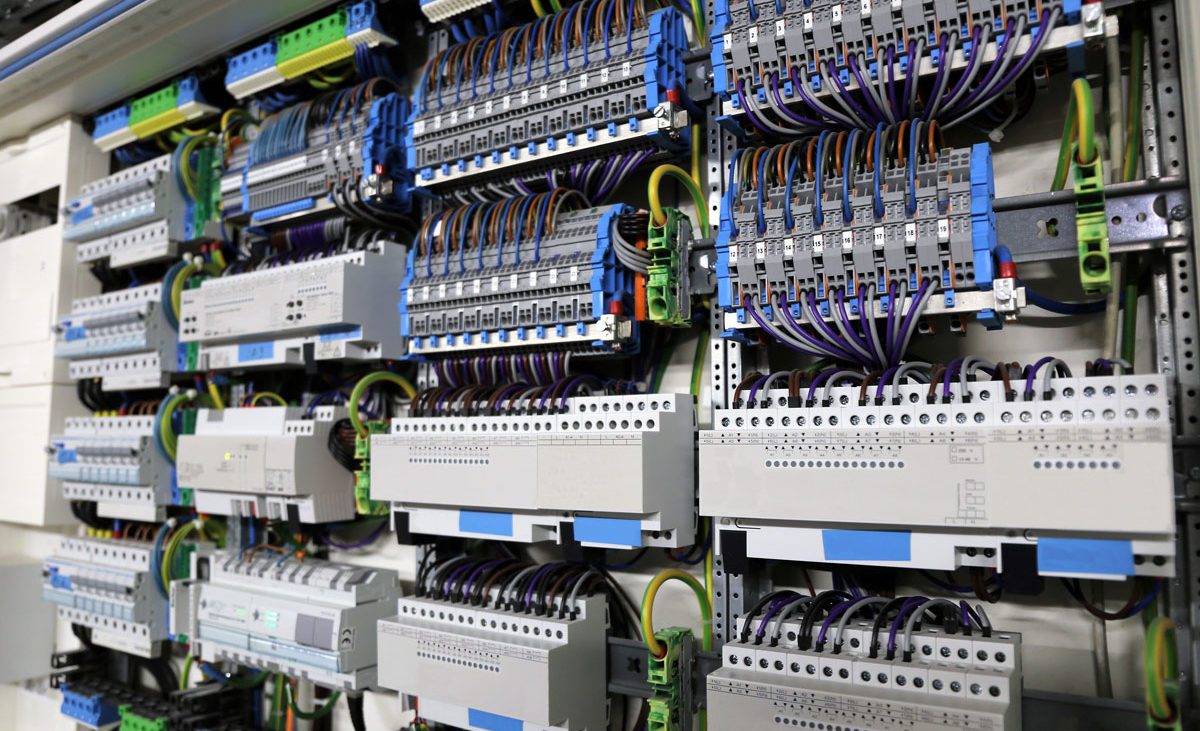Top-rated Electrical Engineering Design Services Tailored to Specific Needs
Top-rated Electrical Engineering Design Services Tailored to Specific Needs
Blog Article
Innovative Electrical Design Services for Modern Facilities
The advancement of contemporary framework requires innovative electric design solutions that not just enhance operational effectiveness but likewise address sustainability obstacles. As urban settings expand increasingly intricate, incorporating modern technologies such as wise grids and renewable power sources becomes paramount. These improvements not only guarantee to enhance power usage however additionally foster durability versus future demands. The landscape of electrical design is undertaking fast improvement, prompting a more detailed exam of arising trends and their implications for long-lasting infrastructure stability. What might the future hold for those who embrace these ingenious techniques?
Importance of Innovative Electric Design
Ingenious electric design plays a vital role in modern-day framework, affecting not just efficiency however likewise sustainability. As cities progress and the demand for energy boosts, the requirement for innovative electrical systems comes to be critical. These systems need to not only satisfy present needs however also prepare for future development and technological improvements.
A well-executed electric design can dramatically reduce power usage, thereby lowering functional expenses and decreasing environmental influence. By incorporating renewable resource sources, such as photovoltaic panels and wind turbines, innovative designs can improve power freedom and resilience. Wise grid innovations allow for real-time monitoring and administration of power circulation, optimizing performance and lowering waste.
Security is an additional essential aspect of electrical design. Implementing rigorous standards and innovative modern technologies can mitigate threats related to electrical failures, guaranteeing a safe and secure setting for businesses and locals alike. Furthermore, innovative styles promote adaptability, allowing infrastructures to incorporate arising technologies flawlessly.
Key Fads in Electrical Design
As the landscape of electric design remains to advance, several essential patterns are shaping the future of the industry. One substantial pattern is the assimilation of clever innovation right into electric systems. The expansion of the Net of Points (IoT) has made it possible for real-time surveillance and control of electric devices, boosting efficiency and assisting in predictive upkeep.
One more fad is the growing emphasis on modular design. This technique permits scalable and adaptable remedies, enabling infrastructure to adapt to altering demands without substantial renovations. Furthermore, the use of innovative simulation tools and Structure Info Modeling (BIM) is becoming progressively common, enhancing the design process and boosting cooperation among stakeholders.
Moreover, improvements in products scientific research are bring about the development of lighter, more resilient, and energy-efficient components. This advancement is specifically vital for high-performance buildings and facilities tasks.
Finally, there is a marked shift in the direction of data-driven decision-making - industrial electrical design. Leveraging information analytics aids designers maximize systems for efficiency and cost-effectiveness. Together, these trends signify a transformative era in electrical design, boosting performance, sustainability, and strength in modern-day framework
Sustainable Energy Solutions
Lasting energy services are significantly ending up being a vital emphasis in electric design, reflecting a more comprehensive commitment to environmental responsibility and resource effectiveness. These services aim to reduce environmental impact while maximizing energy consumption in numerous frameworks, from residential buildings to large business centers.
Among the primary techniques includes the combination of renewable resource sources, such as photovoltaic panels and wind generators, into electric systems. This not just reduces dependency on nonrenewable fuel sources but likewise improves energy durability. Furthermore, innovative power storage systems, such as advanced batteries, make it possible for reliable administration and circulation of energy, making sure that excess power produced during height manufacturing can be utilized throughout high demand periods.
In addition, energy-efficient design techniques are being adopted to improve overall system performance. This includes making use of energy-efficient lights, heating and cooling systems, and wise structure modern technologies that keep an eye on and adjust power usage based upon tenancy and environmental problems.
Smart Grid Technologies
The execution of lasting energy services normally results in the exploration of wise grid technologies, which play a crucial function in modernizing electrical systems. Smart grids visit this website leverage advanced communication technologies and data analytics to enhance the dependability, efficiency, and sustainability of electrical power distribution. By incorporating electronic modern technology with standard grid framework, these systems help with real-time tracking, automated control, and enhanced decision-making abilities.
One of the vital features of wise grids is their capacity to suit renewable resource resources, such as solar and wind power. This flexibility not just lowers dependency on nonrenewable fuel sources yet also enables for a more decentralized energy manufacturing model. Additionally, clever grids enable need response programs, where customers can readjust their energy usage based upon real-time prices, consequently promoting power conservation and minimizing peak load demands.
In addition, clever grid innovations improve grid durability by making it possible for quicker recognition and resolution of outages, inevitably lessening downtime. With anticipating upkeep and analytics, utilities can enhance procedures and boost solution more information distribution. As neighborhoods and cities remain to progress, wise grid modern technologies are important for constructing a effective and lasting electric infrastructure that meets the needs of modern society.

Future-Proofing Facilities
To make sure long-lasting practicality and versatility, future-proofing framework is vital in the swiftly progressing landscape of electric design services. As technology advances and power demands shift, it is crucial that electrical systems are made with flexibility in mind. This involves integrating scalable solutions that can suit future upgrades without demanding considerable overhauls.

Additionally, sustainability must be a keystone of future-proofed layouts. Using renewable power sources, such as solar and wind, and optimizing energy efficiency minimize reliance on nonrenewable fuel sources, straightening with worldwide initiatives to fight climate modification.
Conclusion
By focusing on versatility, sustainability, and efficiency, these services address have a peek here the developing needs of power systems. The integration of wise grid innovations and sustainable power services boosts resilience and reduces operational prices.
A well-executed electric design can substantially decrease power intake, therefore decreasing operational expenses and minimizing environmental influence. By integrating eco-friendly energy sources, such as solar panels and wind generators, cutting-edge layouts can enhance power independence and durability. Additionally, cutting-edge energy storage space systems, such as sophisticated batteries, allow efficient management and circulation of energy, making sure that surplus power generated throughout optimal manufacturing can be used throughout high need periods.
Wise grids make it possible for demand feedback programs, where consumers can readjust their energy usage based on real-time pricing, thereby promoting power conservation and decreasing peak tons needs. (residential electrical design)
As modern technology advancements and power needs change, it is crucial that electric systems are designed with flexibility in mind.
Report this page